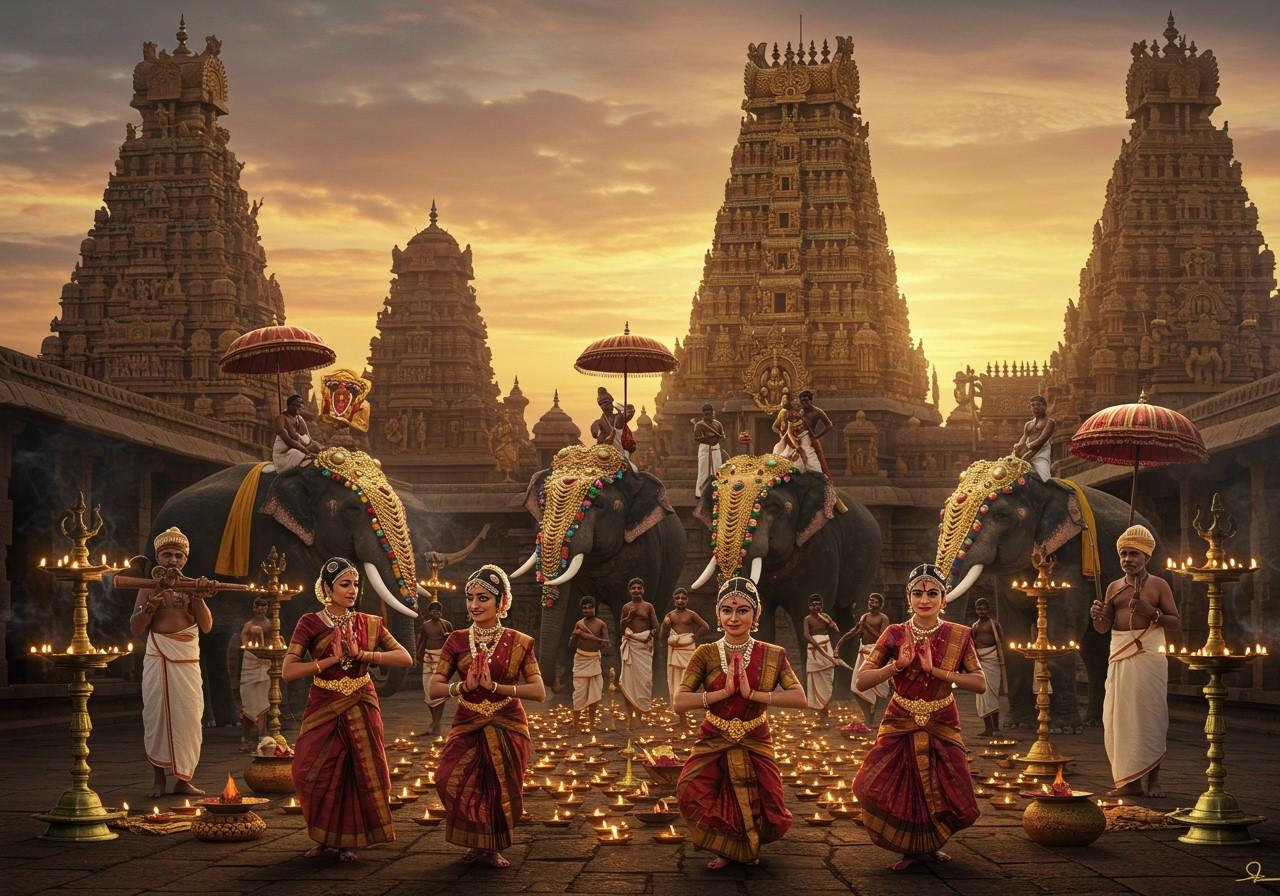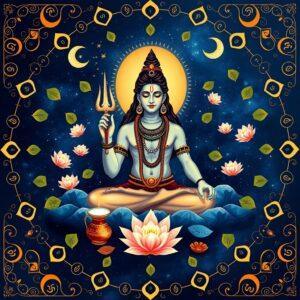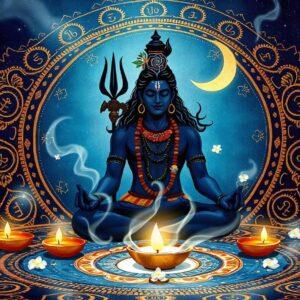
Embark on a captivating exploration of the Chola dynasty, celebrated for its rich cultural heritage and vibrant festivities. This empire, which reigned over Southern India from the 9th to the 13th centuries, was characterized by magnificent celebrations and intricate rituals, reflecting their deep devotion to religion, art, and community.
Historical Context of Chola Festivals
The Chola dynasty’s influence on the region’s festivals is profound. Their political and social structure nurtured a flourishing culture of celebrations. Chola kings, such as Rajaraja Chola I and his son Rajendra Chola I, generously supported temples and religious ceremonies, amplifying the grandeur of festivals. During their reign (circa 985-1044 CE), festivals often marked significant events like a king’s accession or natal star. These celebrations also honored the rulers’ longevity and achievements, reflecting the deep connection between the monarchy and religious practices. Agriculture and seasonal cycles influenced the festival calendar, while the close relationship between religion and state emphasized temple-centric celebrations. Trade and cultural exchanges further enriched the evolution of these festivals, with inscriptions and literature meticulously documenting these vibrant traditions.
Major Chola Festivals
Prominent festivals during the Chola period (300 BCE-1279 CE) included:
- Pongal: This harvest festival involved offerings to deities, marking a time of thanksgiving for a bountiful harvest. Special dishes were prepared and shared with family and community, expressing gratitude for nature’s blessings.
- Maha Shivaratri: As a major cultural event, Maha Shivaratri held deep religious significance for the Chola people. Elaborate rituals and prayers were offered to Lord Shiva, often accompanied by fasting and all-night vigils. The Brihadishvara Temple, a testament to Chola architecture, likely served as a central location for these celebrations.
- Chidambaram Natyanjali: Dedicated to Lord Shiva, this festival showcased exquisite dance performances, particularly Bharatanatyam, a classical dance form that flourished under Chola patronage. The Natyanjali festival was a testament to the Chola dynasty’s appreciation for the arts.
- Thiruvaiyaru Thyagaraja Aradhana: A later addition, this festival honors the revered Carnatic music composer Saint Thyagaraja. It features renowned musicians paying homage through performances of his compositions.
- Karthigai Deepam: This festival of lights involved illuminating temples and homes with lamps, symbolizing the victory of light over darkness. It was a time of spiritual reflection and renewal.
- Vasant Panchami: This spring festival celebrated the goddess Saraswati, the deity of knowledge and arts. People wore yellow, a color associated with the goddess, and engaged in educational pursuits.
- Mahamagam: Celebrated every twelve years, this grand festival involved a ritual bath in the holy tank at Kumbakonam. It attracted pilgrims from all over the empire, seeking spiritual purification and blessings.
Ritual Practices During Chola Festivals
Chola festivals were characterized by intricate rituals:
- Offerings to Deities: Devotees offered a variety of items to the deities, including food, flowers, incense, and precious metals, as expressions of devotion and gratitude. These offerings were often accompanied by specific mantras and prayers.
- Music, Dance, and Drama: Performances like Bharatanatyam and Carnatic music concerts were integral parts of the celebrations, adding to the festive atmosphere and providing entertainment. These art forms flourished under Chola patronage.
- Processions: Deities were carried through the streets on elaborately decorated chariots, accompanied by music, chanting, and devotees. These processions were a vibrant display of religious fervor and community participation.
- Temple Decorations: Temples were adorned with vibrant colors, intricate carvings, and symbolic motifs, creating a visually stunning backdrop for the festivities. The decorations added to the sacred atmosphere and enhanced the spiritual experience.
- Community Involvement: Everyone in the community, from priests to artisans, played a role in the festival preparations and celebrations, fostering a sense of unity and shared purpose. This collective involvement strengthened social bonds.
- Purification Rites: Symbolic use of water, fire, and sacred objects played a significant role in purification rituals, cleansing the body and mind and preparing individuals for spiritual renewal. These rites were often performed before entering temples or participating in ceremonies.
- Festival Foods: Special dishes were prepared, often using seasonal ingredients, emphasizing the cultural importance of food and its connection to celebrations. These culinary traditions were passed down through generations.
Cultural Significance of Chola Festivals
Chola festivals played a crucial role in reinforcing community bonds and preserving cultural heritage. These celebrations also significantly influenced various art forms, including music, dance, and visual arts. From an economic perspective, festivals stimulated trade and commerce, contributing to the prosperity of the empire. The impact of Chola festivals on contemporary South Indian culture remains significant, shaping traditions and practices even today.
How Poojn.in Helps Preserve Chola Festival Traditions Today
Poojn.in, India’s largest cultural goods and services store, offers a wide range of products that help individuals maintain the authenticity of Chola-era festival celebrations in the present day.
Poojn.in provides:
- Traditional Puja Items: Pure copper and brass vessels, similar to those used in Chola temples, authentic camphor, and traditional wicks for aarti, along with premium kumkum and chandanam for sacred markings. These items allow for the continuation of traditional practices.
- Festival-Specific Products: Complete puja sets for major festivals like Thai Pongal and Tamil New Year, traditional oil lamps (vilakku) crafted from brass and bronze, and pure cotton vastram and angavastram for deity decoration, enabling authentic celebrations.
- Ritual Essentials: Sacred threads and malas made according to traditional specifications, pure ghee and sesame oil for ritual lamps, and natural incense and dhoop made from traditional ingredients, ensuring the purity and sanctity of rituals.
These carefully sourced, quality-checked items meet traditional standards and are conveniently delivered across India, facilitating the preservation of Chola-era ritual practices with authentic materials.
Note: Product availability may vary. Please check the website for current stock and pricing.
Conclusion
Chola festivals and celebrations stand as a testament to the dynasty’s rich cultural legacy, highlighting their profound influence on religion, arts, and community life. The vibrant rituals, music, dance, and communal involvement showcased a deep reverence for tradition and a harmonious blend of cultural practices. The legacy of these festivals continues to resonate in South Indian culture today, reminding us of the importance of preserving and honoring our traditions.
FAQs on Chola Festivals & Celebrations
What were the main festivals celebrated during the Chola period? The Chola period saw grand celebrations of festivals like Pongal, Navaratri, and Deepavali, often incorporating rituals, traditional music, and dance. These festivals served as important social and religious occasions.
What rituals were practiced? Rituals included offerings to deities, temple processions, community feasts, and the decoration of homes and temples with flowers and lights. These practices demonstrated devotion and fostered community spirit.
What was the cultural significance? Chola festivals held deep cultural significance, promoting community bonding, religious worship, and harvest celebrations. They played a vital role in strengthening social ties and preserving cultural traditions.
How did the Chola dynasty influence their festivals? The Chola rulers’ patronage of temple construction and rituals ensured that festivals were celebrated with grandeur and splendor, reflecting the dynasty’s power and influence.
Were there any unique Chola festivals? Yes, festivals like Adi Perukku, celebrating river flooding and prosperity, involved unique prayers and offerings to water bodies, demonstrating the Chola connection to nature’s rhythms.
How did people prepare? Preparations involved cleaning and decorating homes, temples, and streets, preparing special foods, crafting traditional attire, and rehearsing performances, creating a vibrant and festive atmosphere.
What role did music and dance play? Music and dance, including Bharatanatyam and Carnatic music, were integral to Chola festivals, reflecting the rich artistic heritage of the period and adding to the celebratory spirit.
Did Chola festivals impact modern-day celebrations? Yes, many practices from Chola festivals, such as the emphasis on community, religious rituals, and traditional arts, continue to influence contemporary festivals in South India, demonstrating the lasting legacy of Chola culture.


